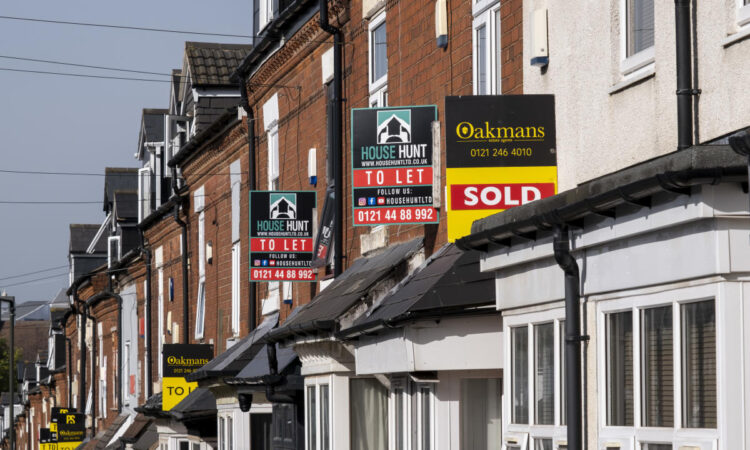
UK house prices were on the up this month, according to Nationwide’s House Price Index, meaning a slight improvement in the annual rate of house price growth from -1.8% in December to -0.2% in January.
Prices ticked up 0.7% to an average of £257,656 as pressures on mortgage rates eased, following an optimistic shift in how investors view the Bank of England‘s potential interest rate path, the building society said.
“While a rapid rebound in activity or house prices in 2024 appears unlikely, the outlook is looking a little more positive,” said Robert Gardiner, Nationwide’s chief economist. “The most recent RICS survey suggests the decline in new buyer enquiries has halted, while there are tentative signs of a pickup in the number of properties coming onto the market.”
The Bank of England has raised interest rates to a 15-year high of 5.25% before hitting the pause button for the past few months. Markets believe Threadneedle Street will begin bringing rates down as early as May and 2024 could finish with interest rates at 4%.
The average rate on a two-year fixed deal last week stood at 5.69% while for a five-year deal, rates came down to 5.26%, according to figures from Uswitch. In July 2023 rates peaked at 6.86%, during the turmoil that marked Liz Truss’ premiership.
Nationwide’s data echoes that of property website Zoopla, which said earlier this week that new sales agreed were 13% higher in the first three weeks of January than this time last year.
Demand was up 12%, measured by would-be buyers contacting agents to inquire about and arrange viewings for a specific property listed on Zoopla.
Zoopla recorded an annual house price fall of 0.8% across the country in December, with a steeper drop of 2.5% in the East of England.
Read more: 9 expert predictions on UK house prices, mortgages and renting
The difficulty of raising a deposit was cited by Nationwide as one of the key factors holding the market back. A 20% deposit on a typical first-time buyer home equates to around 105% of average annual gross income – down from the all-time high of 116% recorded in 2022, but still close to the pre-financial crisis level of 108%.
“House prices are still very high relative to earnings, with the house price to earnings ratio standing at 5.2 at the end of 2023, well above the long run average of 3.9,” said Gardiner.
Affordability by region
As for performance by region, affordability pressures were particularly pronounced in London, the south east of England and East Anglia, with Scotland and the north registering as the most affordable regions.
The variations have led to stark differences emerging between those who would like to buy and those who are actually able to do so, said Nationwide.
This is most pronounced in London, where the average income of actual first-time buyers (for a single borrower) is around 55% higher than the average income in the capital (for an adult full time worker).
Read more: How to prepare your pension to live to 100
Similarly, in the South East and East of England, the average income of actual first-time buyers is around 25% above the average income in these regions.
“We do not expect a return to the rates of house price inflation seen during 2020, 2021 and 2022, but the foundations under house prices are firming, and we expect to see modest rises rather than falls during 2024,” said Anthony Codling, managing director of equity research for European housebuilding and building materials at RBC Capital Markets.
Watch: UK house prices creep up as experts predict ‘smoother year’ for buyers and sellers
Download the Yahoo Finance app, available for Apple and Android.
